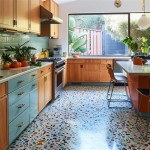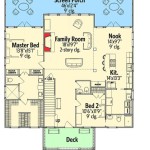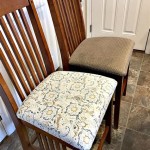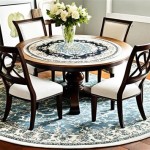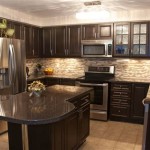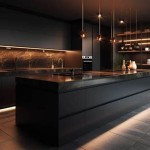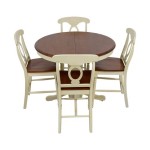Floating Wall Shelves: A Functional and Stylish Addition to Your Kitchen
Floating wall shelves have emerged as a prominent design element in modern kitchens, offering a versatile solution for storage, display, and aesthetic enhancement. Their minimalist design, characterized by the absence of visible supports, creates a clean and uncluttered look, making them suitable for various kitchen styles, from contemporary to traditional. These shelves provide a pragmatic alternative to bulky cabinets and traditional shelving systems, maximizing space utilization while adding a touch of sophistication to the room.
The appeal of floating shelves lies in their ability to seamlessly integrate into the existing kitchen design. They can be used to showcase decorative items, store frequently used kitchenware, or even house small appliances. Their adaptability and ease of installation contribute to their growing popularity amongst homeowners seeking to optimize their kitchen space and elevate its visual appeal.
Understanding the Benefits of Floating Shelves in the Kitchen
Floating shelves offer a multitude of benefits for kitchen organization and design. A primary advantage is their space-saving design. Unlike traditional cabinets that consume floor space, floating shelves utilize vertical space, freeing up valuable countertop area and making smaller kitchens feel more spacious. This is especially beneficial in apartments or homes with limited square footage where maximizing every inch of available space is crucial.
Another key benefit is their versatility. Floating shelves can be installed at various heights and lengths, allowing for customization based on specific storage needs and aesthetic preferences. They can be used to store spices, cookbooks, dishes, glassware, or even decorative plants. This adaptability makes them a practical solution for organizing a wide range of kitchen items.
Furthermore, floating shelves contribute to a more open and airy feel in the kitchen. The absence of bulky cabinet doors creates a visual lightness that can make a small kitchen appear larger and more inviting. This open design also allows for easier access to stored items, making cooking and meal preparation more efficient.
Finally, floating shelves can enhance the aesthetic appeal of the kitchen. They provide an opportunity to showcase decorative items and personalize the space. Strategically placed shelves can draw the eye and create focal points, adding visual interest to the overall design. The clean lines and minimalist design of floating shelves complement a wide range of kitchen styles, from modern and contemporary to rustic and traditional.
Factors to Consider When Choosing Floating Shelves
Selecting the appropriate floating shelves for a kitchen requires careful consideration of various factors to ensure both functionality and aesthetic appeal. One of the most important considerations is the weight capacity of the shelves. Different materials and mounting systems offer varying levels of support, and it is crucial to choose shelves that can safely hold the intended load. It is essential to estimate the weight of the items that will be stored on the shelves and select shelves with a sufficient weight rating. Overloading shelves can lead to sagging, instability, and potential accidents.
The material of the shelves is another critical factor to consider. Common materials include wood, metal, glass, and laminate. Wood shelves offer a classic and warm aesthetic, while metal shelves provide a more modern and industrial look. Glass shelves can create a sense of lightness and transparency, while laminate shelves are a cost-effective and durable option. The choice of material should be based on the desired aesthetic, the overall kitchen design, and the intended use of the shelves. For example, in a kitchen prone to moisture, water-resistant materials like laminate or treated wood are preferable.
The mounting system is also a key consideration. Floating shelves are typically mounted using hidden brackets or support rods that are concealed within the shelf. The quality and strength of the mounting system are crucial for ensuring the stability and safety of the shelves. It is important to choose a mounting system that is appropriate for the type of wall (e.g., drywall, plaster, concrete) and the weight of the intended load. Professional installation is recommended, especially for heavier shelves or those being mounted on challenging wall surfaces.
Consider the style and finish of the shelves. The shelves should complement the overall kitchen design and color scheme. Floating shelves are available in a wide range of styles, from sleek and minimalist to rustic and distressed. The finish of the shelves should also be considered, as it can affect their durability and maintenance requirements. For example, painted shelves may require more frequent touch-ups than stained or sealed shelves.
Finally, consider the placement of the shelves. The location of the shelves should be strategically chosen to maximize storage space and enhance the visual appeal of the kitchen. Shelves should be placed within easy reach of frequently used items and should not obstruct walkways or interfere with kitchen appliances. It is also important to consider the overall balance and symmetry of the design when positioning the shelves.
Installation and Maintenance of Floating Shelves
Proper installation is crucial for the safety and stability of floating shelves. The first step is to accurately locate the wall studs. Wall studs provide the strongest support for the shelves and are essential for ensuring that they can hold the intended load. A stud finder can be used to locate the studs, or alternatively, a manual method involving tapping on the wall and listening for a solid sound can be employed. It is essential to mark the location of the studs accurately.
Once the stud locations are identified, the mounting brackets can be attached to the wall. The brackets should be aligned horizontally and securely fastened to the studs using screws. It is important to use screws of the appropriate length and gauge to ensure a secure connection. For walls without studs, anchor bolts or specialized drywall anchors may be necessary to provide sufficient support.
After the brackets are installed, the shelves can be slid onto the brackets. The shelves should fit snugly and securely onto the brackets. If the shelves are loose or wobbly, shims can be used to provide a more secure fit. It is important to ensure that the shelves are level before placing any items on them.
Regular maintenance is essential for keeping floating shelves in good condition. Dust the shelves regularly with a soft cloth or duster to prevent the accumulation of dirt and grime. Avoid using harsh chemicals or abrasive cleaners, as they can damage the finish of the shelves. For wood shelves, periodically apply a wood polish or sealant to protect the wood from moisture and scratches.
Avoid overloading the shelves beyond their weight capacity. Overloading can cause the shelves to sag, become unstable, and potentially collapse. Distribute the weight evenly across the shelves to minimize stress on the mounting system. If storing heavy items, place them closer to the wall where the shelves have the most support.
Inspect the mounting system regularly for any signs of wear or damage. Check the screws and brackets to ensure that they are still securely fastened. If any screws are loose, tighten them immediately. If any brackets are damaged, replace them as soon as possible. Performing regular maintenance will help to ensure the longevity and safety of the floating shelves.
In cases of significant weight or complex installations, consulting a professional installer is advisable. A professional can ensure that the shelves are properly installed and can provide guidance on the appropriate mounting system and weight capacity.
Ultimately, floating shelves provide a practical and aesthetically pleasing solution for kitchen storage. By carefully considering the benefits, factors to consider when choosing, and proper installation and maintenance techniques, homeowners can effectively integrate floating shelves into their kitchens and enhance both the functionality and visual appeal of their space.

Floating Wall Shelves Set Of 10 Rustic Wood Decor Farmhouse Mounted For Bedroom Living Room Kitchen And Bathroom

Kitchen Floating Shelves Shelf With Brackets Bathroom Wood Chunky Thin Etsy

Rustic Wood Floating Shelves Bathroom Shelf Kitchen Shelving 3 Inch Thick Heavy Duty Wall Storage Etsy

Cubilan 31 5 In W X 9 4 D 25 2 H Rustic Brown Decorative Wall Shelf Floating Shelving

Emmerson Reclaimed Wood Floating Wall Shelves 24 48

Bestier 31 Kitchen Wall Shelves 3 Tier Floating For Bathroom Bedroom Rustic Brown

Floating Shelves Wall Mounted Set Of 3 36 In Cherry Brown Wood Storage With Lip Design

One Long Kitchen Laundry Rustic Floating Shelf Flat L Bracket Wall Storage Modern Shelving Etsy

Pine Custom Floating Shelves With Hidden Dowel Rod Bracket

Greenstell Wall Mounted Floating Shelves 12 Hooks Adjustable Crossbar Set Of 2 40cm

